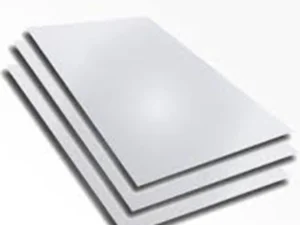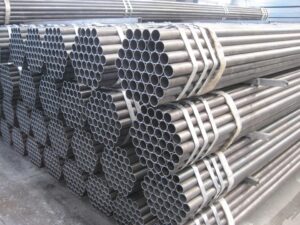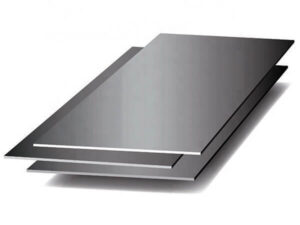Description
316L Stainless Steel Sheets: A Versatile Workhorse for Demanding Applications
316L stainless steel sheets are a staple in various industries, renowned for their exceptional corrosion resistance, weldability, and strength. As a low-carbon variant of 316 stainless steel, 316L offers enhanced protection against sensitization (chromium carbide precipitation) during welding, making it a preferred choice for numerous demanding applications. This article delves into the properties, benefits, and wide range of uses of 316L stainless steel sheets.
Understanding the Composition and Properties
316L stainless steel is an austenitic alloy, meaning it possesses a non-magnetic structure in its annealed condition. Its key constituents include:
- Chromium (16-18%): Provides the fundamental corrosion resistance, forming a passive chromium oxide layer that protects the underlying metal.
- Nickel (10-14%): Stabilizes the austenitic structure and further enhances corrosion resistance, especially in reducing environments.
- Molybdenum (2-3%): Significantly improves resistance to pitting and crevice corrosion, particularly in chloride-rich environments like seawater.
- Carbon (0.03% max): The low carbon content minimizes the risk of sensitization during welding, preserving corrosion resistance in the heat-affected zone.
These compositional elements contribute to a unique combination of properties, making 316L stainless steel sheets a highly versatile material:
- Superior Corrosion Resistance: Exceptional resistance to a wide array of corrosive environments, including chlorides, acids, and alkalis.
- Excellent Weldability: Low carbon content facilitates easier welding and minimizes the risk of weld decay.
- High Strength and Ductility: Offers a good balance of strength for structural applications and ductility for forming and fabrication processes.
- Good Formability: Can be easily formed, bent, and drawn without significant risk of cracking or tearing.
- Hygienic and Easy to Clean: Non-porous surface promotes cleanliness and prevents the growth of bacteria, crucial for sanitary applications.
- High and Low Temperature Performance: Maintains good strength and corrosion resistance over a wide temperature range.
Applications Across Diverse Industries
The unique combination of properties makes 316L stainless steel sheets suitable for a wide array of applications across various industries:
- Chemical Processing: Tanks, vessels, pipes, and reactors for handling corrosive chemicals and acids.
- Pharmaceuticals: Equipment, tanks, and piping systems requiring high levels of hygiene and resistance to cleaning agents.
- Food and Beverage: Processing equipment, storage tanks, and transportation vessels to ensure food safety and prevent contamination.
- Marine: Boat fittings, railings, and structural components exposed to saltwater and marine environments.
- Medical: Surgical instruments, implants, and medical devices requiring biocompatibility and resistance to sterilization procedures.
- Architecture and Construction: Exterior cladding, roofing, and structural elements for enhanced durability and aesthetic appeal.
- Oil and Gas: Offshore platforms, pipelines, and process equipment requiring resistance to saltwater corrosion and harsh operating conditions.
- Textile Manufacturing: Dyeing and bleaching equipment exposed to corrosive chemicals and extreme temperatures.
Advantages of Choosing 316L Stainless Steel Sheets
Compared to other materials, 316L stainless steel sheets offer several compelling advantages:
- Long Service Life: Resistant to corrosion and degradation, ensuring a long-lasting and reliable performance.
- Low Maintenance Costs: Requires minimal maintenance due to its inherent corrosion resistance.
- Easy Fabrication: Welds easily and can be formed into complex shapes.
- Recyclable: Environmentally friendly as it can be recycled without significant loss of properties.
- Aesthetically Pleasing: Offers a bright, clean appearance that can enhance the aesthetic appeal of various applications.
Considerations When Selecting 316L Stainless Steel Sheets
While 316L stainless steel sheets offer numerous advantages, it’s crucial to consider the following factors during the selection process:
- Thickness: Choose the appropriate sheet thickness based on the structural requirements and load-bearing capacity of the application.
- Surface Finish: Select the desired surface finish (e.g., mill finish, polished, brushed) based on aesthetic preferences and functional requirements.
- Dimensions: Ensure the sheet dimensions are compatible with the intended application and fabrication processes.
- Supplier Reputation: Choose a reputable supplier with a proven track record of providing high-quality materials and reliable service.
Conclusion
316L stainless steel sheets are a versatile and reliable material choice for a wide range of applications where corrosion resistance, weldability, and strength are critical. Its superior properties make it a valuable asset in demanding industries, providing long-lasting performance and minimizing maintenance costs. By understanding the properties, benefits, and considerations involved in selecting 316L stainless steel sheets, engineers and designers can make informed decisions to optimize the performance and longevity of their projects. Its combination of durability, hygiene, and aesthetic appeal continues to solidify its position as a workhorse material in countless applications worldwide.











Reviews
There are no reviews yet.